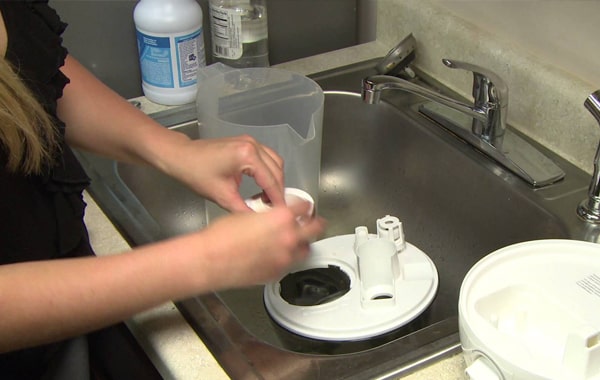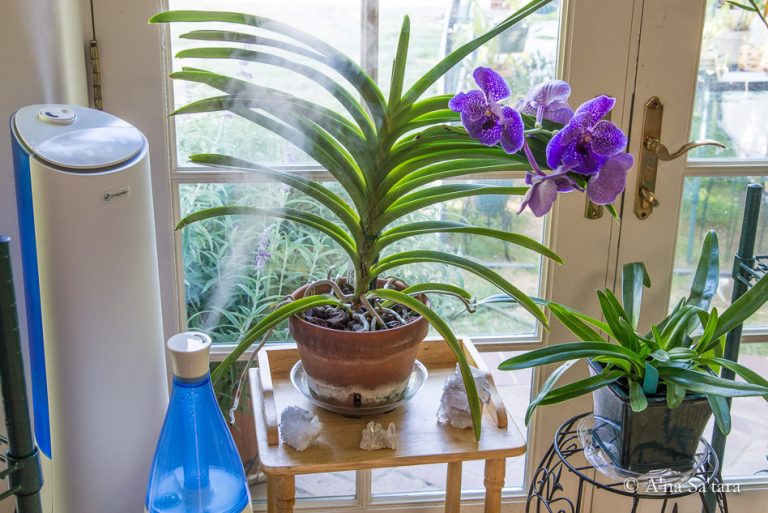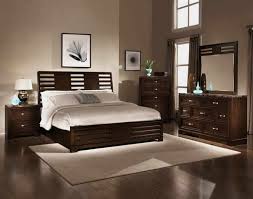Optimal Bedroom Humidity: Protect Sleep & Furniture
Struggling with sleepless nights or waking up feeling less than refreshed? It might not just be your mattress to blame. The humidity level in your bedroom plays a crucial role in your comfort and health. I’ll dive into why maintaining the optimal humidity is key and how it can transform your sleep experience.
You’ll discover that balancing humidity isn’t just about comfort; it’s about creating a sanctuary for your well-being. From preventing allergens to safeguarding your furniture, I’ll guide you through the simple steps to achieve that perfect humidity balance. Get ready to breathe easier and rest better—tonight and every night.
Why Humidity Matters in Your Bedroom
When I’m about to drift off to sleep, I’m often reminded of how crucial maintaining the ideal humidity level is. Humidity levels in your bedroom can profoundly influence both the quality of your sleep and your general health. With too much moisture in the air, my sleep is often interrupted by discomfort, whereas air that’s too dry can aggravate respiratory symptoms.
Let me break down the impacts of humidity on sleep quality. High humidity can make a room feel warmer than it actually is. This sensation is due to moisture-saturated air hindering the evaporation of sweat from our skin, making it difficult for me to cool down and get comfortable. Conversely, low humidity can cause dryness in the nasal passages and throat, leading to snoring, which nobody enjoys.
Beyond personal comfort, there’s the unseen battle against allergens. Dust mites and mold thrive in high humidity environments, and having these allergens in my sleeping space can trigger allergies or asthma. I can’t emphasize enough how important it is to keep humidity levels in check to combat these irritants.
But that’s not all. Maintaining optimal humidity protects bedroom furniture as well. Wood, in particular, is susceptible to damage from fluctuations in humidity. Too much moisture and my wooden bed frame could swell and warp; too little, and it might crack. Fabrics and electronics are no different, and they also demand a stable environment. By sustaining proper humidity, not only am I ensuring my comfort but also the longevity of the items in my room.
Monitoring and adjusting humidity levels might seem like a trivial task, but understanding why it matters can lead to transformative improvements in my sleeping environment. By taking control of the humidity, I’m able to alleviate discomfort, reduce health risks, and sleep soundly through the night, waking up refreshed and ready to tackle the day ahead.
Understanding the Optimal Humidity Level
When we talk about optimal humidity levels, we’re aiming for a range that not only feels comfortable but also promotes health and well-being. The American Society of Heating, Refrigerating, and Air-Conditioning Engineers (ASHRAE) recommends indoor humidity levels to be maintained between 30-60%. Within this range, you can prevent the growth of pathogens like mold and dust mites, which thrive outside these levels.
Keeping my bedroom within this range keeps my skin from becoming too dry or too oily, both of which can happen when humidity levels aren’t balanced. Too low humidity can exacerbate skin conditions such as eczema while high humidity can lead to increased sweat and oil production, possibly causing breakouts.
| Ideal Indoor Humidity Range | Benefits |
|---|---|
| 30-60% | Reduces pathogen growth |
| Balances skin condition | |
| Prevents respiratory issues |
A hygrometer, an instrument for measuring humidity, is invaluable in regularly checking humidity levels in your space. I keep one in my bedroom, and it notifies me if the levels fall outside the ideal range, which prompts me to use my humidifier or dehumidifier accordingly.
Let’s not overlook the impact of regional climate. Those living in arid areas will often need to add humidity, while those in humid regions may need to remove it. The season also plays a critical role; wintertime, for example, typically requires additional humidity due to the use of heating systems which can dry out the air.
Ultimately, regularly monitoring and adjusting the humidity levels in my bedroom ensures I’m taking a proactive approach to my comfort and health. By using simple tools like hygrometers and employing methods to either add or remove moisture from the air, I’m able to sustain an environment that’s conducive to a good night’s sleep and a haven for well-being.
Benefits of Maintaining the Right Humidity
Maintaining the appropriate humidity level in my bedroom isn’t just about comfort; it’s also about reaping several health benefits. The right balance of humidity can drastically improve the quality of my sleep, which, in turn, impacts my overall health positively.
Better Sleep Quality: When I keep my bedroom’s humidity level in the recommended range, I reduce the likelihood of disruptions caused by respiratory discomfort. Dry air can lead to throat irritation and nasal congestion, while overly humid environments can foster allergens. The balance, therefore, is critical to achieving an uninterrupted, restful night’s sleep.
Respiratory Health: Optimal humidity levels support my respiratory system. Air that’s too dry can aggravate conditions like asthma and allergies. By maintaining a balanced humidity, I help ensure my airways are not irritated by the environment, making it easier for me to breathe while I rest.
Healthier Skin: My skin also benefits from the right humidity level. Dry air can sap moisture from the skin, leading to dryness and flaking. Conversely, an overly humid room might cause my skin to become more oily. I’ve found that the ideal humidity level keeps my skin feeling comfortable by preserving its natural moisture balance.
Preservation of Furniture and Musical Instruments: It’s not just about me—my belongings also benefit. Wood furniture and musical instruments, such as guitars and pianos, can warp or crack in improper humidity. Keeping the air in my bedroom at the right humidity level ensures the longevity of these valuable items.
By using a hygrometer to keep an eye on the humidity in my bedroom, I can navigate between the extremes of dry and damp. Adjusting a humidifier or dehumidifier accordingly helps me maintain the perfect environment, thus safeguarding my health and comfort along with my possessions. With each adjustment, I’m creating an environment where wellness and relaxation take center stage, ensuring that the time I spend in my sanctuary is truly restorative.
The Link Between Humidity and Allergens
Maintaining the right humidity level in your bedroom isn’t just about comfort; it’s also a pivotal factor in allergen control. High humidity levels can become a breeding ground for dust mites, a common household allergen. These microscopic critters thrive in moist environments, especially when the humidity levels soar above 50%.
Dust mites are not the only concern. I’ve noticed that mold also loves damp areas. When humidity is too high, mold spores can multiply quickly, leading to a variety of respiratory issues. In fact, a report by the Environmental Protection Agency (EPA) indicated that keeping indoor humidity below 60% can help prevent mold growth.
Conversely, when the air’s too dry, usually below 30% humidity, it can cause problems too. Airborne allergens like pollen have an easier time staying afloat in drier air, which increases the likelihood of them invading your respiratory system. This is something you’ll want to avoid, especially during allergy season.
Thankfully, monitoring and adjusting your bedroom’s humidity can help manage allergen levels effectively. Let me share some stats that highlight the importance of keeping an eye on humidity:
| Humidity Level | Dust Mite Population | Mold Growth Potential |
|---|---|---|
| Above 50% | Increases | High |
| Below 30% | Decreases | Low |
Remember, a hygrometer can be your best friend when it comes to tracking ambient humidity in your room. Pair it with a dehumidifier to reduce moisture during more humid months or a humidifier to add moisture when the air’s too dry. With these tools, I’ve kept my bedroom’s humidity balanced and allergen levels in check. What’s more, this balanced environment contributes to healthier skin and a better night’s sleep, not to mention protection for your wooden furniture and musical instruments.
Finding the Right Humidity Balance
Maintaining the ideal humidity level in your bedroom involves more than just setting a number on your humidifier or dehumidifier. It requires a judicious balance that must consider various factors like the climate you live in, the season, and even the specific characteristics of your home.
Firstly, I’ll note that indoor humidity levels should ideally range between 30% and 50%. In this sweet spot, you’ll benefit from all the health and comfort perks I’ve discussed without fostering a breeding ground for dust mites, mold, and other allergens. It’s during those extreme winter and summer months that finding this balance can become a bit tricky.
To ensure I’m within the right range, I’ve got a digital hygrometer on my nightstand. This handy gadget lets me keep a real-time eye on the humidity. Should levels start to skew too high or too low, I can easily adjust my humidifier or dehumidifier accordingly.
Here’s what I consider when aiming for the right humidity balance:
- Local Weather Patterns: If you live in a humid climate, you’ll likely need a dehumidifier, whereas drier climates may require a humidifier.
- Seasonal Changes: Pay attention to seasonal variations. Winter air tends to be drier, while the summer might bring about increased humidity.
- Room Characteristics: Larger bedrooms or those with more fabric may retain humidity differently. Similarly, rooms with poor ventilation need closer humidity control.
While you may need to tweak settings throughout the year to stay within the recommended humidity range, some strategically placed plants or a bowl of water near a heat source can also help regulate moisture levels naturally. The key is to stay proactive and continuously monitor so adjustments can be made effortlessly.
Remember, managing the humidity effectively supports a restorative sleep environment where you can breathe easier and keep allergens at bay. As I integrate these practices into my routine, I’ve discovered just how integral they are for ensuring a comfortable sleep haven.
Simple Steps to Maintain the Optimal Humidity
Maintaining the ideal humidity level in my bedroom isn’t just beneficial—it’s essential for a comfortable night’s sleep. Digital hygrometers play a crucial role in this process by providing accurate readings. My rule of thumb is to aim for relative humidity between 30% and 50%. Here’s how I keep it in the sweet spot:
First, I use a humidifier in the dryer months to add moisture to the air. It’s important to regularly clean the humidifier to prevent mold and bacteria growth. Conversely, during more humid periods, a dehumidifier works wonders in reducing excess moisture that can lead to discomfort and allergens.
Next, I’ve found that houseplants are not just for decor; they can balance indoor humidity levels naturally. I choose varieties like spider plants and peace lilies that are particularly good at this. Plus, they improve air quality, which is another bonus for healthy living.
I also implement small changes, like making sure that showers and baths aren’t overly steaming up the house. I’ve installed ventilation fans in my bathroom, and I make sure to use them every time I shower to whisk away the extra humidity.
Lastly, it’s important to address any underlying issues that might be affecting humidity levels. I regularly check for leaks or drafts around windows and doors since they can introduce additional moisture or dry out the room. Sealing any gaps ensures that my efforts to control indoor humidity aren’t in vain.
By combining technology with natural solutions and smart home maintenance, I’ve been able to keep my bedroom at an optimal humidity level with minimal effort. Ensuring that my bedroom environment remains consistently comfortable has been key to improving my sleep and overall well-being.
How Humidity Affects Your Sleep Quality
While I’ve covered the basics of why optimal bedroom humidity is important, you may be wondering exactly how humidity levels influence your sleep quality.
Firstly, high humidity can make the bedroom feel warmer than it actually is. Our bodies need to cool down as part of the sleep cycle, and excess moisture in the air can impede this natural drop in body temperature. This often results in restless sleep or difficulty falling asleep. Conversely, low humidity can cause discomfort, too. Dry air can lead to irritation of the respiratory system and skin, creating a distracting sensation that can keep you awake or disrupt your sleep. Not to mention, it can exacerbate snoring—a nuisance for both you and your partner.
Here’s where maintaining that sweet spot for humidity becomes crucial. Ideally, bedroom humidity levels should be between 30% to 50%. This range helps support the natural thermoregulation of your body, ensuring you fall asleep comfortably and stay that way until morning.
Besides temperature regulation, the right humidity level helps to fend off allergens like dust mites and molds, which thrive in high moisture environments. This is not just about comfort but about health as well. By keeping the humidity in check, you’re reducing your exposure to these allergens, thus minimizing the risk of nighttime allergy symptoms or asthma attacks that could interrupt your sleep.
To keep an eye on your bedroom’s humidity levels, as I’ve mentioned earlier, a digital hygrometer is an invaluable tool. It provides real-time readings so you can adjust your humidifier or dehumidifier as needed. Remember, small adjustments can make a big difference in improving your sleep quality.
Protecting Your Furniture From Humidity Damage
Along with safeguarding my health, I’ve found maintaining the optimal humidity level in the bedroom is essential for protecting furniture from humidity damage. Excess moisture can be a silent destroyer of wood, fabric, and upholstery, leading to a myriad of problems that compromise the longevity and aesthetic appeal of furniture.
When the humidity levels peak, wood tends to absorb moisture, causing it to swell, warp, or even rot. This is especially problematic for wooden bed frames, cabinets, and dressers that serve functional and decorative purposes in the bedroom. I’ve learned that keeping humidity levels in check prevents these issues, maintaining the structural integrity of these items.
Similarly, fabrics like beddings and curtains can suffer in high humidity environments. Moisture-laden air fosters the growth of mold and mildew, which can leave unwelcome stains and odors. It’s imperative to me to control the bedroom’s humidity to ensure that these fabric elements remain fresh, clean, and hygienic.
Even metal fixtures, though might seem impervious, are at risk. High humidity can cause corrosion and tarnishing. Any metallic accents on furniture or bedroom hardware can degrade over time if exposed to persistent moisture.
Here are some proactive measures I stick to for protecting my bedroom furniture from humidity damage:
- I regularly monitor the humidity with a digital hygrometer.
- Using a dehumidifier to pull excess moisture from the air during humid months.
- I ensure proper ventilation by occasionally opening windows or using an exhaust fan.
- Placing silica gel packets in drawers or closets helps absorb extra moisture.
- For added protection, I opt for furniture polishes and cleaners that offer a level of moisture resistance.
By incorporating these strategies, I can tackle the humidity, creating an environment where both I and my bedroom furnishings can thrive without the impending threat of damage due to excess moisture levels.
Conclusion
Keeping the right humidity in your bedroom isn’t just about comfort—it’s essential for your health and the longevity of your furniture. I’ve shared some effective strategies that’ll help you achieve that perfect balance to ensure restful sleep and preserve your space. Remember, it’s all about staying proactive and monitoring the environment. With these tips in hand, you’re now equipped to create a bedroom oasis that supports both your well-being and your belongings. Here’s to many nights of perfect slumber in a space that’s just right!







